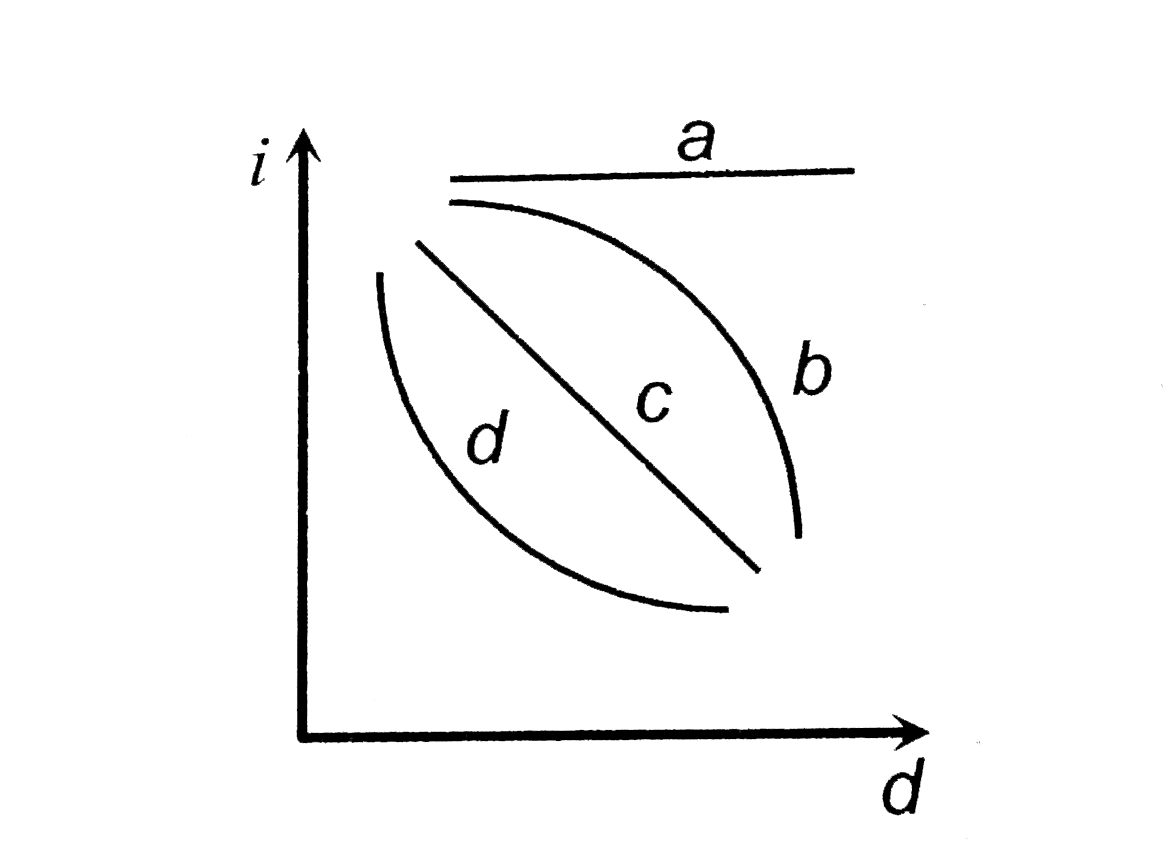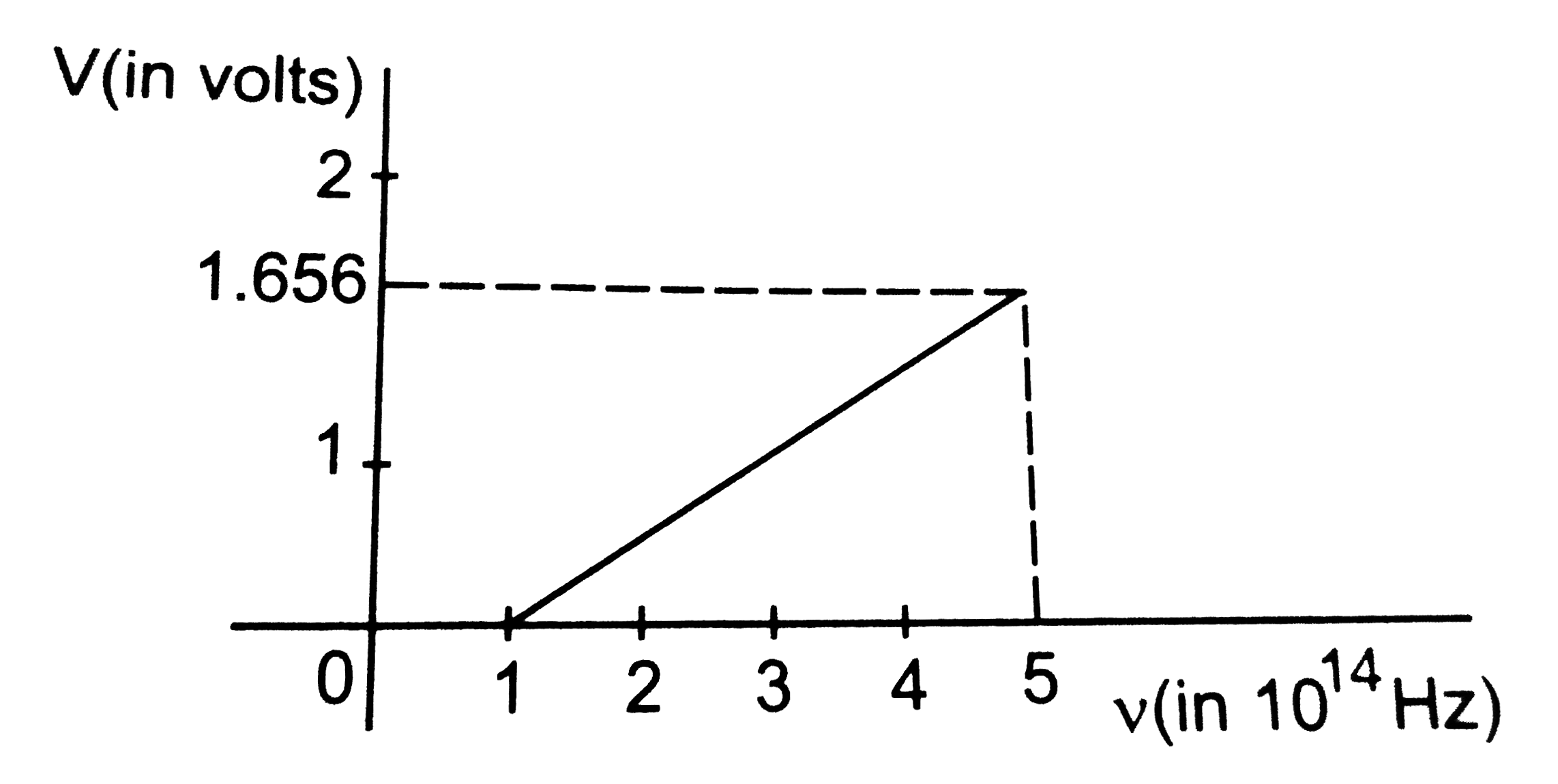When stopping potential is applied in an experiment on photoelectric effect, no photo current is observed. This means that
the emission of photoelectrons is stopped
the photoelectrons are emitted but are re-absorbed by the emitter metal
the photoelectrons are accumulated near the collector plate
the photoelectrons are dispersed from the sides of the apparatus.
The correct Answer is:B
To solve the question regarding the photoelectric effect and the observation of photocurrent when a stopping potential is applied, we can break down the explanation into clear steps:
1. Understanding the Photoelectric Effect:
- When light of sufficient frequency strikes a metal surface (emitter plate), it can cause the emission of electrons from that surface. This phenomenon is known as the photoelectric effect.
2. Role of Stopping Potential:
- In a typical photoelectric experiment, a positive collector plate is placed near the emitter plate. The emitted electrons are attracted to the positive collector plate, creating a photocurrent.
- The stopping potential (V₀) is the negative potential applied to the collector plate to stop the emitted electrons from reaching it.
3. Effect of Stopping Potential:
- When a stopping potential is applied, it creates an electric field that opposes the motion of the emitted electrons. If the stopping potential is strong enough, it can completely halt the movement of these electrons towards the collector plate.
4. Observation of No Photocurrent:
- If the stopping potential is sufficient to stop all emitted electrons, then no electrons will reach the collector plate. As a result, there will be no flow of current, and thus, no photocurrent will be observed.
5. Conclusion:
- The absence of photocurrent indicates that while photoelectrons are emitted from the emitter plate, they are unable to reach the collector plate due to the applied stopping potential. Instead, they are effectively reabsorbed by the emitter plate.
Final Answer:
When stopping potential is applied in an experiment on the photoelectric effect, no photocurrent is observed because the photoelectrons are emitted but are reabsorbed by the emitter plate.
- When light of sufficient frequency strikes a metal surface (emitter plate), it can cause the emission of electrons from that surface. This phenomenon is known as the photoelectric effect.
- In a typical photoelectric experiment, a positive collector plate is placed near the emitter plate. The emitted electrons are attracted to the positive collector plate, creating a photocurrent.
- The stopping potential (V₀) is the negative potential applied to the collector plate to stop the emitted electrons from reaching it.
- When a stopping potential is applied, it creates an electric field that opposes the motion of the emitted electrons. If the stopping potential is strong enough, it can completely halt the movement of these electrons towards the collector plate.
- If the stopping potential is sufficient to stop all emitted electrons, then no electrons will reach the collector plate. As a result, there will be no flow of current, and thus, no photocurrent will be observed.
- The absence of photocurrent indicates that while photoelectrons are emitted from the emitter plate, they are unable to reach the collector plate due to the applied stopping potential. Instead, they are effectively reabsorbed by the emitter plate.
When stopping potential is applied in an experiment on the photoelectric effect, no photocurrent is observed because the photoelectrons are emitted but are reabsorbed by the emitter plate.
Topper's Solved these Questions
- BOOK - HC VERMA ENGLISHCHAPTER - PHOTO ELECTRIC EFFECT AND WAVE PARTICLE DUALITYEXERCISE - objective II7videos
PHOTO ELECTRIC EFFECT AND WAVE PARTICLE DUALITY
- BOOK - HC VERMA ENGLISHCHAPTER - PHOTO ELECTRIC EFFECT AND WAVE PARTICLE DUALITYEXERCISE - Exercise35videos
PHOTO ELECTRIC EFFECT AND WAVE PARTICLE DUALITY
- BOOK - HC VERMA ENGLISHCHAPTER - PHOTO ELECTRIC EFFECT AND WAVE PARTICLE DUALITYEXERCISE - work out13videos
PHOTO ELECTRIC EFFECT AND WAVE PARTICLE DUALITY
- BOOK - HC VERMA ENGLISHCHAPTER - PERMANENT MAGNETSEXERCISE - Short Answer11videos
PERMANENT MAGNETS
- BOOK - HC VERMA ENGLISHCHAPTER - PHOTOMETRYEXERCISE - All Questions38videos
PHOTOMETRY
Similar Questions
Define the term 'stopping potential' in relation to photoelectric effect.
View SolutionThe electric field associated with a light wave is given by E=E0sin[(1.57×107m−1(x−ct)]. Find the stopping potential when this light is used in an experiment on photoelectric effect with a metal having work - function 1.9 eV.
View Solution
Knowledge Check
- Question 1 - Select One
In photoelectric effect, the photoelectric current is independent of
Aintensity of incident lightBpotential difference applied between the two electrodesCthe nature of emitter materialDfrequency of incident light - Question 2 - Select One
In photoelectric effect, stopping potential depends on
Afrequency of incident lightBnature of the emitter materialCintensity of incident lightDboth (a) and (b)
The electric field associated with a light wave is given by E=E0sin[(1.57x107m−1(x−ct)]. Find the stopping potential when this light is used in an experiment on photoelectric affect with a metal having work - function 1.9 eV.
View SolutionA non-monochromatic light is used in an experiment on photoelectric effect. The stopping potential
View SolutionThe stopping potential in an experiment on photoelectric effect is 2V. What is the maximum kinetic energy of the photoelectrons emitted ?
View SolutionA point source of light is used in an experiment on photoelectric effect . Which of the following curves best represents the variation of photo current (i) with distance (d) of the source from the emitter ?
 View Solution
View SolutionThe stopping potential in an experiment on a photo electric effect is 1.5 V. What is the maximum kinetic energy of the photoelectrons emitted?
View SolutionFigure is the plot of the stopping potential versus the frequency of the light used in an experiment on photoelectric effect. Find (a) the ratio h/e and (b) the work function.
 View Solution
View Solution

